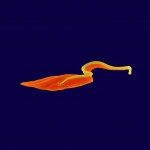Link to Pubmed [PMID] – 11588262
Science 2001 Oct;294(5540):161-5
Toxoplasma gondii is a common human pathogen causing serious, even fatal, disease in the developing fetus and in immunocompromised patients. Despite its ability to reproduce sexually and its broad geographic and host range, Toxoplasma has a clonal population structure comprised principally of three lines. We have analyzed 15 polymorphic loci in the archetypal type I, II, and III strains and found that polymorphism was limited to, at most, two rather than three allelic classes and no polymorphism was detected between alleles in strains of a given type. Multilocus analysis of 10 nonarchetypal isolates likewise clustered the vast majority of alleles into the same two distinct ancestries. These data strongly suggest that the currently predominant genotypes exist as a pandemic outbreak from a genetic mixing of two discrete ancestral lines. To determine if such mixing could lead to the extreme virulence observed for some strains, we examined the F(1) progeny of a cross between a type II and III strain, both of which are relatively avirulent in mice. Among the progeny were recombinants that were at least 3 logs more virulent than either parent. Thus, sexual recombination, by combining polymorphisms in two distinct and competing clonal lines, can be a powerful force driving the natural evolution of virulence in this highly successful pathogen.

